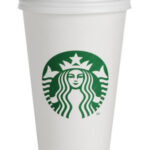RUNNING HEAD: INTERNATIONAL BUSINESS PRACTICES
A companys individual organizational structure is a formal composition of task and reporting relationships that allows the company to control, coordinate, and motivate employees so a common goal can be achieved (George & Jones, 2005, pg. 505). Although there are only five (5) to eight (8) basic organizational structure types, each company has a unique way of pulling these components into one structured outline to portray the necessary relationships. When composing a structure for a particular organization, management looks for the most effective way to categorize departments and their coordinating relationships to achieve the highest levels of production (Ball, McCulloch, Geringer, Minor, & McNett, 2005, pg. 387-389).
Organizational StructureModes of Entry Equity vs. non-EquityWal-MartProduct DivisionalJoint Venture (Mexico)EquityStarbucksMatrixPartnerships (Japan)EquityUnileverHybridExporting (Africa)Non-Equity
Wal-Mart was constructed into a three (3) product divisional structure. The successful world retailers business categories include Wal-Mart Stores (U.S.), Sam’s Club (U.S.), and International stores. The International segment yields about 20% of the companys overall business income and is responsible for several different types of restaurants and stores including Wal-Mart and Sam’s Club in 13 countries and Puerto Rico (Ball at al, 2005, pg. 390). This divisional structure and approach works to Wal-Mart’s advantage because each division is open to focus its efforts on specific goals such as product, service, or customers. Narrowing the focus really allows the company to perform more effectively because they are allowed to pinpoint specific areas needing change and adjust appropriately (George & Jones, 2005, pg. 513).
In recent news, Starbucks has rearranged their organizational structure to better accommodate customer satisfaction. The CEO of Starbucks announced expansion of their matrix organizational structure last month. They will operate under four U.S. divisions including Western/Pacific, Northwest/Mountain, Southeast/Plains and Northeast/Atlantic (Shultz, 2008). Some of the major advantages to having this kind of organizational structure include maximized communication channels (George & Jones, 2005, pg. 515). Howard Shultz believes Starbucks will be able to develop products specified to market appeal more rapidly after the appropriate adjustments have been made. The second portion of Starbucks organizational structure is the continuation of support functions operating as their own department and supporting the shared goals and visions of each of the U.S. divisions as well as the international circuit (Shultz, 2008).
Unilever represents another common organizational structure; the hybrid form. This company operates with three divisional regions, two product segments, and five functional segments. Unilever developed and implemented this organizational structure for their company to improve communication and to take advantage of resources that are available to them. Typically this kind of structure is organized in a top-down manner. Once the executive level is satisfied with the structure, it flows down to management. In some cases the organizational structure may not be visible, but judging by actions and specified reporting protocol the structure is intact and in use (Ball at al, 2005, pg. 393).
Other forms of organizational structure include horizontal corporation and divisional structures broken down by market, product, and geographical settings. In the horizontal corporation, flexibility and quick response is a key factor. This kind of structure is most seen in the electronic and computer industries (Ball et al, 2005, pg. 397). When we examine the reasoning for a business to break down their organizational structure by market, we see specific groupings of customers. For example, larger companies may service many different accounts that require special services. To accommodate these needs the company decides to delineate structure into market groupings. When companies are in the beginning stages of their global expansion, it is common to find a geographic structure to help the company to meet the growing needs of their differentiated clientel. When the product base outgrows the client base, a product structure may need to be implemented so that each product is able to develop research, develop and market its individual products as accurately as possible (George & Jones, 2005, pg. 511-512).
More important than the companies structure is the chosen form of entry for each international venture. Equity-based modes of entry involve managements decision to make foreign investments. These types of entry modes require that a partnership, collaboration, or alliance be made with another company or distributor to better grasp the concept of the economy, culture, and climate within the new area. Non-equity-based modes of entry requires little investment. Projects such as exporting, subcontracting, and franchising can be done with minimal costs to the company overall (Ball et al, 2005, pg. 426-431).
Wal-Marts opened its first international store in Mexico City in 1991. The joint venture entry mode helped the company to manage severe cultural differences within the country and provided a base for Wal-Mart to learn more about their new market. Cifra provided a stepping stone entry in the country while enjoying a 50-50 joint partnership. Still, there were hurdles to tackle even with the best of cultural advice. For example, Wal-Mart paved large parking lots for their Mexican customers and then realized that much of their consumer base rode the bus to the store. Additionally, the high altitude was not taken into consideration and certain products would not work properly because of the condition. Wal-mart kept an open mind and developed a shuttle service to bring its customers and large bags to and from different locations (Ball at al, 2005, pg. 380).
Starbucks ventured into the international market with its first coffee house in Tokyo, Japan in 1995 (Starbucks, 2008). Again we see a successful partnership allowing the company to set its footing inside the foreign country. The company and its executives were initially drawn to the Japanese market for its’ large population and consumers’ high disposable income. After intensive research, Starbucks was motivated to change their business model to adapt to the Japanese culture by catering to 40 year-old businessmen and providing a smoking environment for them to enjoy their coffee treats. However, the founder of the international segment for Starbucks ignored this advice and included traditional U.S. menus for the Japanese locations. This approach was a great success due to the strong affinity the Japanese have for Western brands. Sazaby, Starbucks business partner, understood the complications of working in the East and the West. This understanding of the global market and Japans’ attraction towards these kinds of products contributed to the companies success (Japan External Trade Organization, 2006).
Most businesses choose to begin their international ventures with exports. This is exactly the case with Unilever (Ball at al, 2005, pg. 446). To inexpensively test foreign markets and competition, Unilever experimented with different strategies and investments by exporting to Africa over 100 years ago. Sunlight soap was the first wrapped, branded soap in the region. Because their products were readily received, Unilever expanded their venture by building a soap making plant in the country just a few years later. By the 1960’s, the company had investments in half a dozen additional African regions (The Express Online, n.d.).
After reviewing the success of these internationally renowned companies, it is my recommendation that PM Co. implement a geographic organization structure. This approach would allow for home region managers to continue their focus within their country and region while the company grows and expands outward. This sensitivity of a highly-personalized approach will be used to help propel the company into success within these new ventures. (George & Jones, 2005, pg. 511). Furthermore, exporting is an excellent way for PMC to estimate the average acceptance of it’s product in the three chosen countries. This will help the company to reach areas where they are unable to produce their product. Remaining price-competitive is important to maintain while developing the entry strategy. If a product or upgrade is not available within certain areas, exporting will help us to track the relevance and need a specific market has for the product (Ball et al, 2005, pg 446-447.)
References:
Ball, D., McCulloch Jr., W., Geringer, J., Minor, M., & McNett, J. (2005) (11th ed.) International Business: The Challenge of Global Competition. McGraw-Hill.
CTU Online. (Ed.). (ca. 2008). Phase 3 Course Material [multimedia presentation]. Colorado Springs, CO: CTU Online. Retrieved March 13, 2008, from CTU Online, Virtual Campus, MGM335 Organizational Behavior Principles: 0801B-04. Website: https://campus.ctuonline.edu/MainFrame.aspx?ContentFrame=/Classroom/course.aspx?Class=23719&tid;=39
The Express Online. (n.d.) Corporate Report: Unilever goes all out in Tanzania. Retrieved March 13, 2008, from http://www.theexpress.com/express155/business/corporate_report.htm
George, J. and Jones, G. (2005). Understanding and Managing Organizational Behavior. (4th ed.)Upper Saddle River, NJ: Pearson Prentice Hall.
Japan External Trade Organization. (2006). Starbucks’ green tea success with Japanese consumers leads to worldwide popularity. Retrieved March 17, 2008, from http://www.jetro.org/content/353
Shultz, H. (2008) Starbucks makes organizational changes to enhance customer experience. Retrieved March 13, 2008, from, http://www.starbucks.com/aboutus/pressdesc.asp?id=831
Starbucks. (2008) Starbucks Coffee International. Retrieved March 16, 2008, from http://www.starbucks.com/aboutus/international.asp



